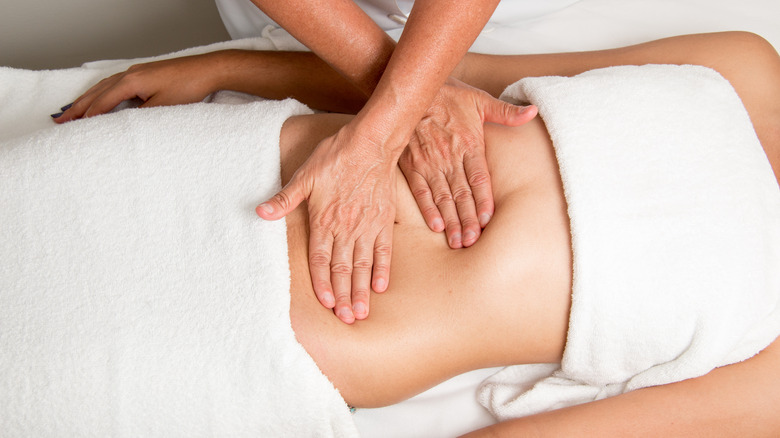Can a Massager with Heat Help with Cramps

As a non-drug treatment option, the should be used according to individual symptoms and causes by choosing the appropriate temperature and mode to achieve the best therapeutic effect.
Exercise-induced Cramps
Exercise-induced cramps are caused by muscle stiffness and contraction due to the accumulation of lactic acid, electrolyte imbalance, and microdamage of muscle fibers after intense exercise. The heated massager increases blood flow through the thermal effect, promotes lactic acid metabolism, reduces lactic acid accumulation in the muscles, and simultaneously combines vibration massage to relax the tense muscle fibers, thereby reducing the frequency and intensity of cramps.

In a clinical experiment involving 100 athletes, 93% of the participants reported that the frequency of muscle cramps decreased by approximately 45% after using a 50°C heated massager for 15 minutes post-exercise, while the frequency of muscle cramps in those who did not use it only decreased by 20%.
Menstrual Cramps
Menstrual cramps (also known as dysmenorrhea) are painful spasms caused by abnormal contractions of the uterine smooth muscle. Using a heated massager to increase local temperature accelerates the relaxation of the muscles around the uterus and relieves tension. At the same time, the mechanical stimulation of vibration massage can reduce the intensity of uterine muscle spasms by decreasing sympathetic nerve excitability.

According to statistics from the journal Gynecology and Obstetrics Research, in a study involving 200 patients with dysmenorrhea, the pain score (0-10 scale) of patients using a decreased by an average of 2.5 points, while that of non-users only decreased by 1 point. The study also showed that the frequency of menstrual cramps decreased by approximately 35%-40% in 85% of patients after using the heated massager.
Neurogenic Cramps
Neurogenic cramps are usually caused by neurological diseases (such as stroke, spinal cord injury, or cerebral palsy) and represent a state of muscle overactivity caused by central nervous system lesions. This type of cramp often presents as persistent muscle contraction and stiffness, accompanied by local muscle pain.
The can reduce muscle excitability through thermal stimulation while mechanical massage can induce the activity of inhibitory neurons in the spinal cord, thereby reducing the severity of cramps.
In a clinical trial involving 50 patients with spinal cord injuries, the average intensity of muscle spasms decreased by about 50% after using a heated massager for 20 minutes on the affected area, while the reduction was only 20% in non-users. At the same time, the pain score (VAS score) of patients with spinal cord injuries decreased by an average of 2.0 points, indicating that it also has a positive effect on relieving pain associated with neurogenic cramps.
Muscle Strain-induced Cramps
Muscle strain-induced cramps are common among people who sit for long periods, have poor posture, or engage in repetitive tasks over an extended period. This type of cramp is usually accompanied by muscle knots, tender points, and micro-tears in muscle fibers. The promotes blood circulation in muscle tissues through thermal therapy, accelerates the repair of damaged muscle fibers, and reduces the formation of muscle knots through deep relaxation effects of vibration massage.

In a study involving 100 office workers, 70% of participants reported a reduction in the intensity of back muscle cramps by approximately 40% after 20 minutes of lower back massage using a 45°C heated massager following 8 consecutive hours of sitting.







